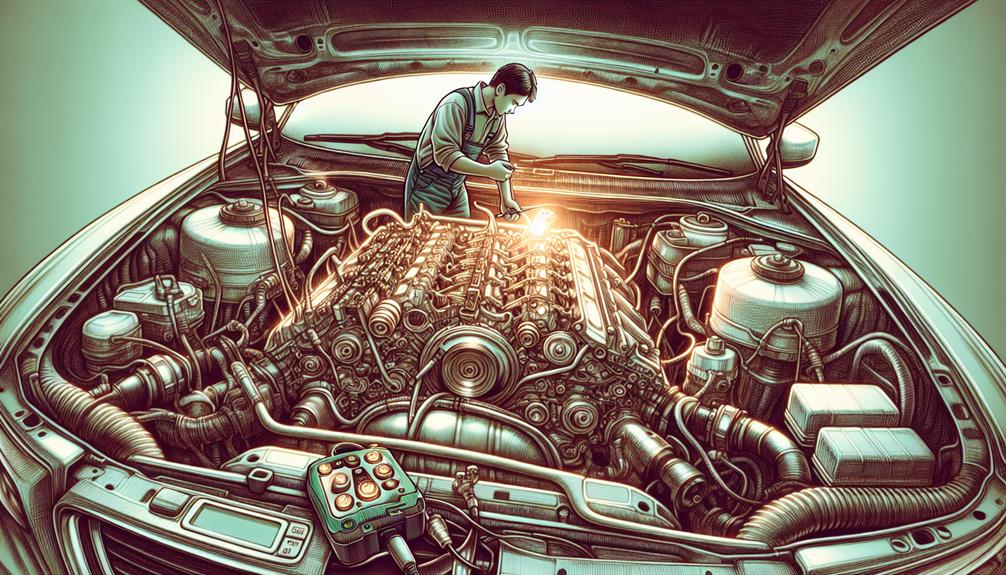
Top Diagnostic Tools for Accurate Engine Troubleshooting
July 3, 2024
Top Reasons for Excessive Oil Consumption in Toyota Cars and How to Fix Them
August 9, 2024In the realm of automotive maintenance, the evolution of engine diagnostics has been significant, transitioning from simple indicator lights to sophisticated, high-tech equipment that scrutinizes vehicle systems with exceptional precision. The initial trigger, often the Check Engine Light, signals a spectrum of potential discrepancies ranging from minor issues to critical system failures. Beyond this rudimentary alert, today’s advanced diagnostic tools, such as OBD-II scanners and proprietary software from vehicle manufacturers, allow for a deeper and more accurate insight into the mechanical and electronic complexities of modern engines. As we explore these tools further, one must consider how they not only aid in pinpointing exact faults but also facilitate preemptive maintenance strategies that can markedly extend the life of a auto repair.
Decoding the Check Engine Light
Illuminating the dashboard, the Check Engine Light serves as a preliminary alert that prompts drivers to seek a diagnosis to prevent potential mechanical failures. When this light activates, it indicates that the vehicle’s onboard diagnostics system (OBD) has detected an anomaly in the engine or emission control system. This warning should not be ignored, as timely intervention can avert more severe issues.
Understanding what triggers this light involves recognizing the breadth of potential faults, ranging from a loose gas cap, which might seem minor yet impacts emission control, to more severe conditions like a malfunctioning catalytic converter. Each scenario embeds specific diagnostic trouble codes (DTCs) stored in the vehicle’s computer system, accessible through an OBD-II scanner. However, interpreting these codes requires a nuanced understanding of automotive systems.
For many in our community, this light is more than a warning—it’s a call to ensure the longevity and efficiency of one’s vehicle. Engaging with a professional mechanic who can accurately decode these signals is crucial. They leverage their expertise to provide a detailed analysis, ensuring that every vehicle not only functions optimally but also adheres to environmental standards, thereby fostering a sense of responsibility and belonging among conscientious drivers.
Exploring Advanced Diagnostic Tools
Beyond the basic diagnostics provided by the Check Engine Light, advanced diagnostic tools offer a more comprehensive analysis of a vehicle’s health and functionality. These sophisticated devices enable technicians to delve deeper into the intricate web of systems within modern automobiles. They read complex codes and data beyond the standard OBD-II (On-Board Diagnostics) system codes, providing insights into issues that are not directly related to emissions – the primary focus of a Check Engine Light.
Among these tools are graphing multimeters and oscilloscopes that allow for real-time testing of electrical signals throughout a vehicle. This capability is crucial for pinpointing malfunctions in sensors and actuators that might otherwise go undetected.
Another significant advancement is the use of manufacturer-specific scanners that access a broader range of proprietary codes and data exclusive to certain car makes and models. These scanners ensure that diagnostics are not just generic but tailored to the specific nuances of the vehicle.
Moreover, the integration of wireless technology enables these tools to connect seamlessly with smartphones and tablets, allowing for mobile diagnostics. This not only enhances the flexibility and efficiency of the diagnostic process but also fosters a sense of community and shared knowledge among professionals and enthusiasts alike, ensuring that every member feels like part of a greater whole, dedicated to vehicle care and optimization.
In conclusion, the evolution of engine diagnostics from the basic Check Engine Light to sophisticated tools such as graphing multimeters and manufacturer-specific scanners represents a significant advancement in automotive technology.
A notable statistic reveals that the use of these advanced diagnostic tools can reduce troubleshooting time by up to 70%, underscoring their efficiency and effectiveness in maintaining vehicle health.
This technological progression ensures more precise diagnostics, ultimately enhancing the longevity and performance of modern auto repair.
Prev article



